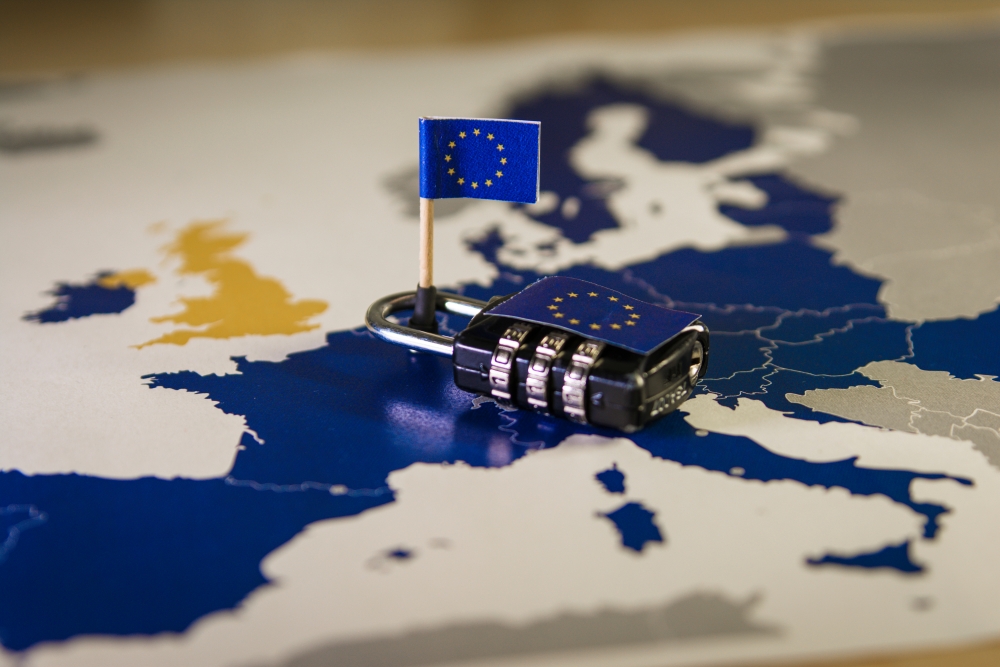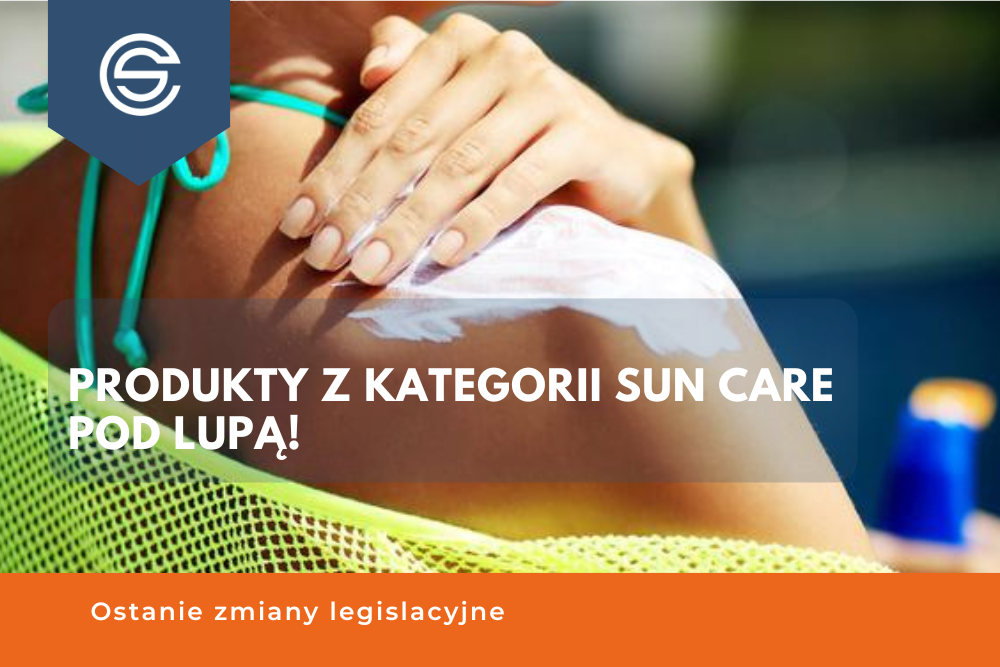Holidays have been going on for several weeks. In R&D departments, no one thinks about active work on this season’s sun protection products anymore, but we should keep an eye on the situation and monitor the nearest changes in the sun care product category. If You plan new sun care products launching, it is good to know the current legislative status!
You have us, the CosmetoSAFE team, we keep your ear to the ground and so we have collected the most important information, observations and conclusions!
MODIFICATIONS OF ISO STANDARDS FOR SUN PROTECTION TESTING
First of all – a lot has been happening recently in the field of the efficacy of sunscreen products. Breaking news of this year certainly is the publication of the new version of the ISO 24442 standard of June 2022, concerning the in vivo UVA protection tests. In March 2022, some changes were also made to the in vivo SPF testing with ISO 24444: 2019 / AMD 1: 2022.
A summary of the most important changes to the ISO standards for sun care products’ efficacy testing is presented in the table below. Let’s pay attention to whether the efficacy tests ordered by us meet the current requirements!
Table 1. The most important changes to the ISO standards for sun care products’ efficacy testing
| Scope of protection | Method | Date of publication | ISO Standards |
| UVB (SPF) | in vivo | 18.03.2022 | ISO 24444:2019/Amd 1:2022 – the amendment introduces some changes in section concerning reference standard usage and some recommendation in the area of statistical analysis of test results. |
| 18.12.2019 | ISO 24444:2019: replaced the 2010 version of the standard; main changes to the test procedure:
• revised definition of MED (Minimal Erythema Response), • introducing the classification of panelists based on the instrumental analysis of the skin phototype with ITA (Individual Typology Angle), instead of the Fitzpatrick scale, • new formulation reference standards (P5, P6, P8) with higher SPF values, • detailed recommendations on how to apply the tested product, • standard supplemented (Annex F) with photographic documentation of MED examples to facilitate the evaluation of the effects of skin UV exposure.
Principle of the method: the skin’s response (erythema) to exposure to UV radiation is measured. Based on the skin reaction, the SPF value is determined as the ratio of MED for treated and untreated skin. |
||
| in vitro | – | methods still under development, two standards exist already as a drafts (ISO/CD 23675; ISO/CD 23698) | |
| UVA | in vivo | 10.06.2022 | 24442:2022 – the method is in principle similar to the procedure for UVB protection, where different spectral characteristics of the light source is used (UVA range) and the degree of protection: UVAPF is determined:
The following are used: appropriate classifications of panelists based on ITA, appropriate formulation reference standards and standardized light source.
Principle of the method: the skin’s response after UVA radiation exposure is examined. The response is measured as skin darkening: PPD (Persistent Pigment Darkening). Based on the skin reaction, the UVAPF value is determined as the ratio of the minimum dose of radiation causing PPD (MPPDD) for the treated and untreated skin. |
| in vitro | 07.12.2021 | 24443:2021 – the method is based on the assessment of UV-transmittance through a thin film of sunscreen sample spreaded on a standardized surface. The main changes introduced in 2021 consider:
· characteristics of PMMA plates, · recommendations for standardization of the method of application of the tested product, · introducing the model P8 reference formulation (higher UVA PF values), · critical wavelength test, · guidelines for the application of the correlation coefficient C (in vivo / in vitro extrapolation). |
|
| Water resistance | in vivo | SPF assessment according to ISO 24444: 2019 | |
| 05.05.2020 | ISO 16217: 2020 Water immersion procedure for determining water resistance – the standard describes the water bath process used during the test | ||
| 22.09.2020 | ISO 18861: 2020 Percentage of water resistance. The standard presents a method of calculating water resistance. |
Based on: https://www.iso.org/ics/71.100.70/x/
UV FILTERS AND ENDOCRINE ACTIVE COMPOUNDS
Secondly, apart from changes in the testing of sunscreen products efficacy, significant changes are observed with the ingredients legislation … UV filters have had a bad PR for a long time and their safety is often questioned. One of the important aspects is their potential negative environmental impact and potential ability to alter the functioning of the endocrine system.
Due to the factors mentioned above, certain UV filters have been included in the European Commission’s strategy for the safety assessment of so-called endocrine disruptors (ED). EDs, according to the definition, are substances with harmful effects on the endocrine system. In line with the strategy, the SCCS Committee evaluates the potential human ED properties of cosmetic ingredients, as part of the Fitness Check program. A total of 28 ingredients (including UV filters), divided into 2 groups (A and B) of priority substances were distinguished and are being assessed by SCCS.
We are currently observing the final stage of work on substances from Group A. The process for group B ingredients is currently ongoing, we will observe the SCCS conclusion in the nearest future.
The results of the analysis and legislative effects for the UV filters included in Group A are presented in Table 2.
Table 2. The results of the assessment of the properties of ED for the UV filters were classified as Group A.
| INCI name | CAS | SCCS opinion | Conclusions from the opinion | Regulatory activities |
| BENZOPHENONE-3 | 131-57-7 | Final Opinion 1625/20 | Safe in a max. concentration of:
· 2.2% in body care products, propellant sprays, and pump sprays · 6% in: face and hand products, lipsticks, · max. 0.5% as a formulation stabilizer |
Reg. 2022/1176 of July 7, 2022. |
| 4-METHYLBENZYLIDENE CAMPHOR (4-MC) | 38102-62-4/ 36861-47-9 | SCCS/1640/21 | the use of 4-MC is not safe (due to genotoxic and ED properties) | possible ban on the use |
| OCTOCRYLENE | 6197-30-4 | Final Opinion 1627/21 | Safe at max. 10% concentration in ready for use products.
For propellant spray products – max. concentration 9% |
Reg. 2022/1176 of July 7, 2022. |
| HOMOSALATE | 118-56-9 | Final Opinion 1622/20; | Safe at a max. 7.34% concentration in face products, except propellant sprays | publication of amendment to Annex VI is awaiting |
Legislative activity being finalized for the Group A ingredients does not mean that we do not have to expect further changes in the use of UV filters …Currently, Annex VI contains the UV filters listed below in Table 3, for which the next step of European Commission strategy for ED is ongoing. The step of collecting the data for the ingredients has ended, they are now being analyzed by the SCCS Committee; we expect the publication of the SCCS opinions for each of UV filters in the second half of 2022.
Table 3. UV filters are classified as Group B assessed in terms of ED properties.
| INCI name | CAS | Deadline for SCCS opinions |
| ETHYLHEXYL METHOXYCINNAMATE | 5466-77-3 | November 2022 |
| BENZOPHENONE-4 | 4065-45-6 | November 2022 |
| BENZOPHENONE-5 | 6628-37-1 | November 2022. |
Is this the end of changes in the EU UV filters restrictions?? Unfortunately not…
We must not forget about the current legislative process on the titanium dioxide (TiO2) safety. We wrote about the changes in cosmetic restrictions quite recently…
Additionally, due to the ban on TiO2 (E171) use in the EU food products implemented in 2021, the reassessment of its cosmetic usage is expected. The mandate to the SCCS was submitted in June 2022: Request for a scientific Opinion on TiO2. Let’s keep our finger on the pulse!
PHOTOTOXICITY OF COSMETIC INGREDIENTS
And finally – technologists know that sun care cosmetics are not just and only UV filters. It is equally important that the other formulation components need to be highly stable under the UV exposure and pose no phototoxic properties. The harmful effects of the use of phototoxic substances have been analyzed by the SCCS Committee at least several times. Which ingredients or groups of ingredients should be kept under close scrutiny when we design new sun care products?
- Furocoumarins – are fairly well recognized as phototoxic by the consumers. They are constituents of some essential oils, e.g. citrus, and because of that their use in sun cosmetics should be limited. Furocoumarins are currently banned for use in cosmetics (as intentionally added ingredients). Their natural content in some raw materials should be monitored in the context of the safety of cosmetics use; sun cosmetics have a special place in this matter. In Annex II, no 358 we find the information: Furocoumarins (for example trioxysalen (INN), 8-methoxypsoralen, 5-methoxypsoralen) except for the amounts normally contained in natural extracts. The furocoumarin content in sunscreen and protective products must not exceed 1 mg/kg.
- Methyl-N-methylanthranilate – until recently, it was not an ingredient that we paid special attention to. At the beginning of 2022, under Reg. 2022/135 of 31 January 2022, the conditions for the use of this fragrance ingredient in cosmetic products have changed. The SCCS Committee found it phototoxic and banned its use in sunscreen products and cosmetics (including fragrance products) exposed to natural or artificial UV radiation. We are currently in the transition period of adjusting market products to the newly introduced regulations (until August 21, it is still possible to market cosmetics that do not meet the above-mentioned criteria; until November 21, they will be allowed to be made available on the market).
- the cosmetic usage of the plants from the family of Tagetes (calendula), from similar reasons as above, has been restricted too. The SCCS Committee (SCCS/1551/15) has limited the use of extracts and oils from the Tagetes genus, incl. marigold (Tagetes patula) and marigold (Tagetes minuta). They are currently subject to restrictions for use according to Annex III, entries 309 and 308. The ingredients should not be used in sunscreen products or in products that are exposed to natural or artificial UV radiation. And when used together, the total content of Tagetes in the ready-to-use preparation must not exceed a maximum concentration of 0.01% for leave-on products and 0.1% for rinse-off products.
As you can see, there is no boredom in cosmetic legislation… new research recommendations, some amendments or modification of the regulations… But our team is always up to date on legal issues. If you have any questions, please contact us – we will be happy to sew Q&A training especially for you!



